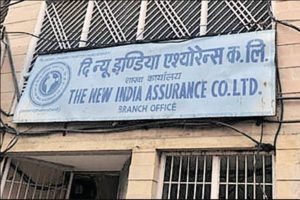
SINGAPORE: The global insurance sector rating agency has revised the outlook for New India Assurance Company Limited to Negative from stable earlier, as the company’s deficiencies in financial reporting continue to result in audit qualifications.
Whilst the company’s audited accounts have been qualified for several years as a result of internal control weakness in the reconciliation of certain accounts, the company received two further matters of emphasis from auditors in fiscal-year 2020 related to claims and expense allocation.
In addition, New India’s persistent underwriting losses and volatility raise concern over the company’s ability to select and price the risks appropriately.
AM Best has downgraded the Financial Strength Rating (FSR) to B++ (Good) from A- (Excellent) and the Long-Term Issuer Credit Rating (Long-Term ICR) to “bbb+” from “a-” of New India Assurance Company Limited. The outlook of these Credit Ratings (ratings) has been revised to stable from negative.
These ratings reflect New India’s balance sheet strength, which AM Best categorises as very strong, as well as its adequate operating performance, favourable business profile and marginal enterprise risk management (ERM).
The rating downgrades follow a revision in AM Best’s assessment of New India’s ERM from appropriate to marginal.
Whilst the unique features of India’s market and the company’s role as government-owned insurer may impact the strategy, AM Best considers New India’s ERM to be below the global standards for an organization of its scale.
AM Best continues to view the company’s balance sheet strength as very strong. This is supported by its risk-adjusted capitalisation, which remained at the strongest level as of March 31, 2020, as measured by Best’s Capital Adequacy Ratio (BCAR). However, New India’s capital adequacy has deteriorated compared with the 2019 position, largely as a result of an approximately 30% decline in its capital and surplus.
This was driven by a sharp fall in the market value of New India’s equity investments. In addition, in the near to medium term, the capital and surplus might be negatively impacted by an additional pension liability of INR 16.4 billion (USD 218 million) resulting from a recent regulatory amendment. Consequently, the company’s risk-adjusted capitalisation is increasingly sensitive to further investment market volatility and/or potential deterioration in the credit quality of the company’s bond investment portfolio, amid the COVID-19 pandemic.
AM Best assesses New India’s operating performance as adequate. New India has reported a five-year average return-on-equity (ROE) ratio of 3.5% (fiscal years 2016 to 2020), as calculated by AM Best. Underwriting performance, while improved in fiscal-year 2020 compared with the prior year, has remained poor owing to persistent losses from its motor and health business, coupled with severe deteriorations in loss experience for engineering, crop and other miscellaneous classes of business in fiscal-year 2020.
Furthermore, AM Best expects that investment income, which the company has relied on mainly to offset underwriting losses and produce operating profits for many years, could be weakened over the near to medium term as the central bank lowers interest rates and companies reduce dividend payouts to conserve resources during the current economic downturn.
The company’s business profile is assessed as favourable. New India remains the largest player in India’s non-life insurance market, ranked by gross premium written. In addition, New India maintains a dominant position in almost every line of business in its domestic market. Furthermore, the company is well-diversified in terms of geographic spread, lines of business and distribution channels. In comparison with local peers, it stands out as the only direct insurer with a considerable overseas footprint.